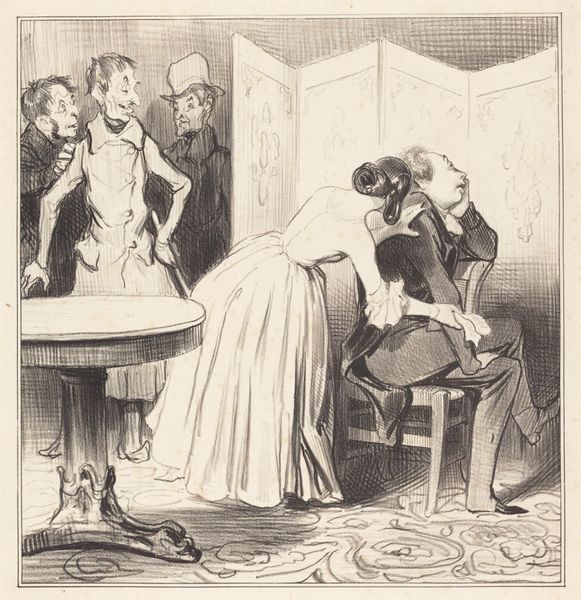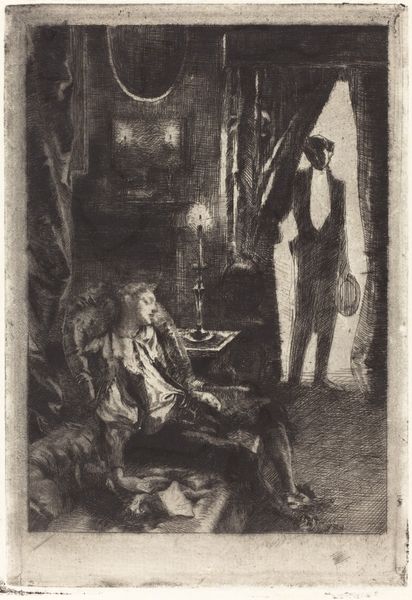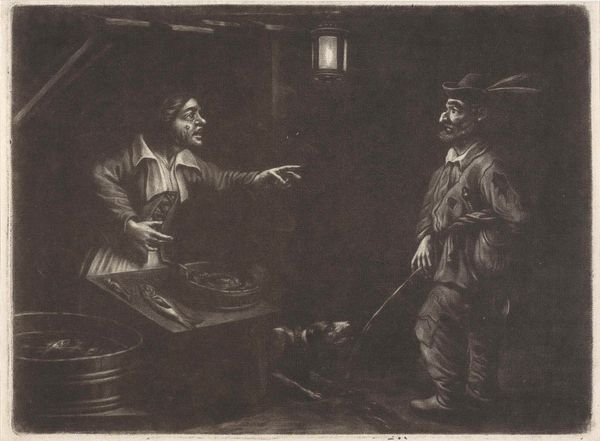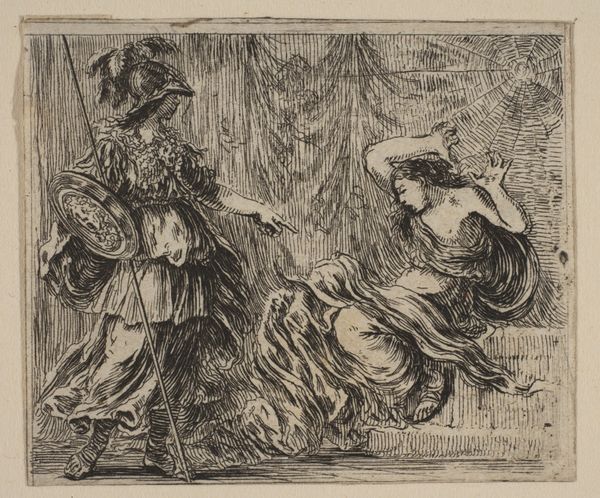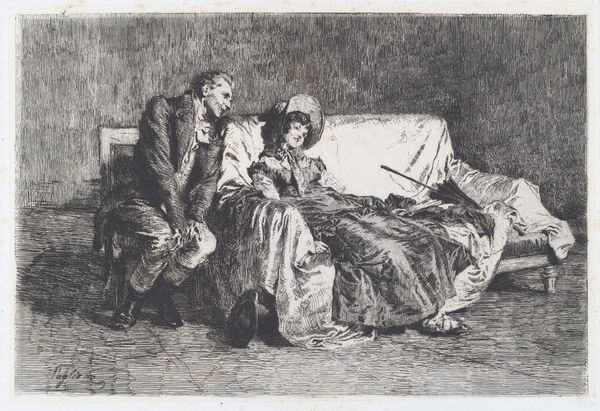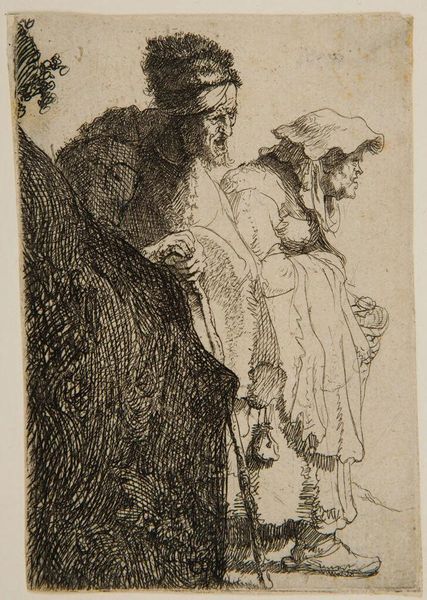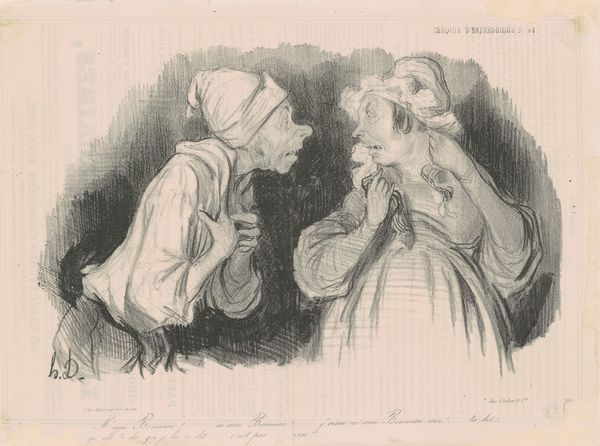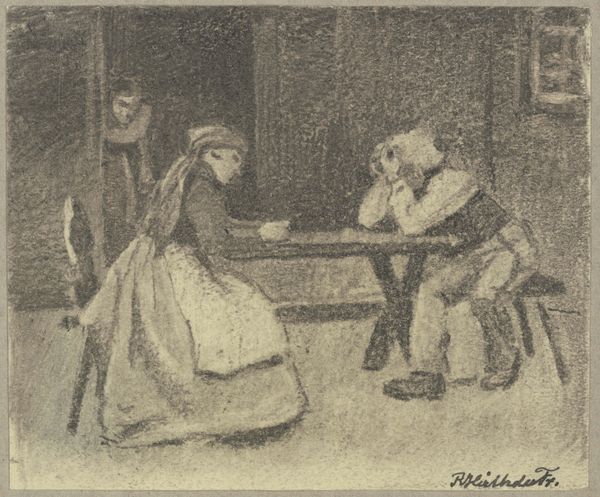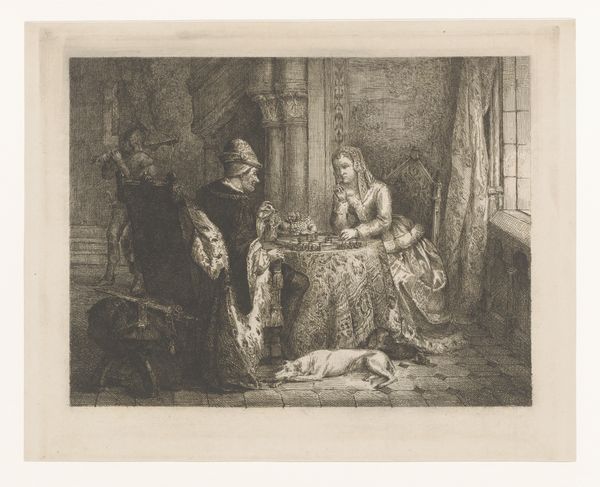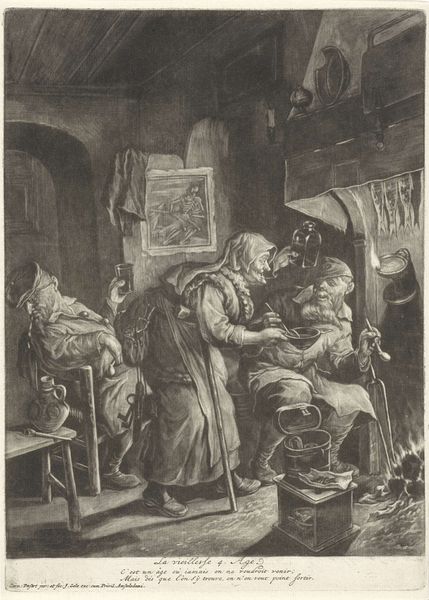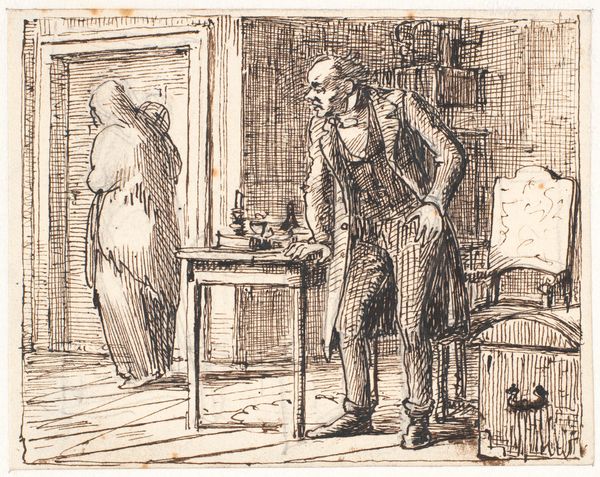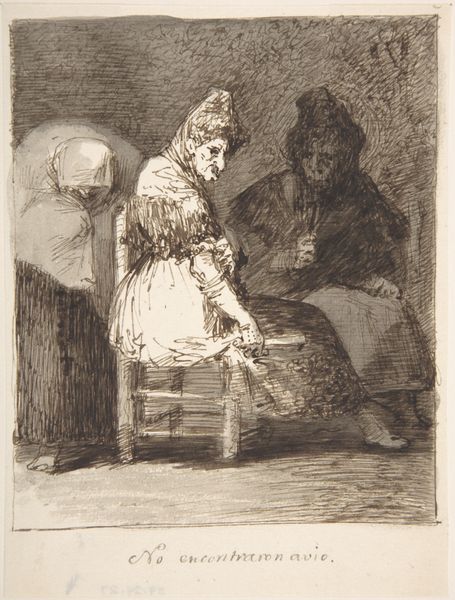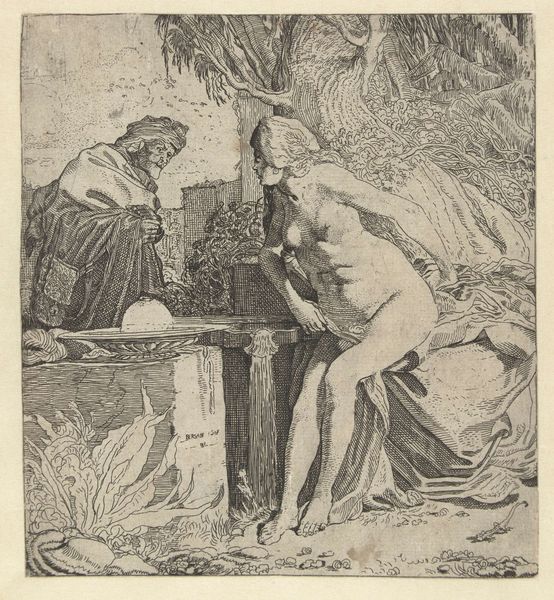
oil-paint
#
portrait
#
oil-paint
#
oil painting
#
romanticism
#
genre-painting
#
pre-raphaelites
#
portrait art
Copyright: Public domain
Curator: Dante Gabriel Rossetti's "The Laboratory," completed in 1849, offers us a glimpse into a world both intimate and clandestine. Editor: Intimate, certainly. The close quarters and the furtive glances certainly suggest a whispered conspiracy, or at the very least, a very deep secret. Curator: Indeed. Rossetti, known for his Pre-Raphaelite leanings, uses rich oil paints to create a scene thick with texture and ambiguous intention. Consider the focal points—the glint of gold on the table, offset against the darker recesses behind, with what looks like an alembic front and center. Editor: I'm struck by the implicit politics of it all. One can read this as a critique of the limitations placed on women's agency in the 19th century. Perhaps this woman is driven to such extremes, experimenting with such dark things in order to escape them. Is that even possible? Curator: It's a pertinent point. This painting invites us to consider the societal pressures that might compel a woman to seek such extreme measures. We can read it as part of a wider dialogue around gender and power in Victorian society. It makes a sharp contrast between private action and the visible restraints of domestic space. But don't discount Rossetti's emphasis on the semiotic here—he uses visual metaphors and the romantic idiom to critique the art establishment. Editor: While I recognize Rossetti's symbolic inclinations, it is precisely how this scenario, with its focus on covert chemistry and female empowerment, mirrors the era’s rising anxiety toward scientific and social advancements. It underscores how individuals, particularly women, explored novel solutions when societal norms seemed suffocating. Curator: It’s a convincing articulation. What strikes me most about “The Laboratory” is its capacity to evoke a moment of tension, where personal will is pitted against historical realities. Editor: Absolutely. Looking closely at this scene helps me to reflect not only on Rossetti’s meticulous attention to detail, like the fabric folds or glints on the chemical equipment, but how it invites viewers to explore both individual desire and broader historical struggles within a single painting.
Comments
No comments
Be the first to comment and join the conversation on the ultimate creative platform.
